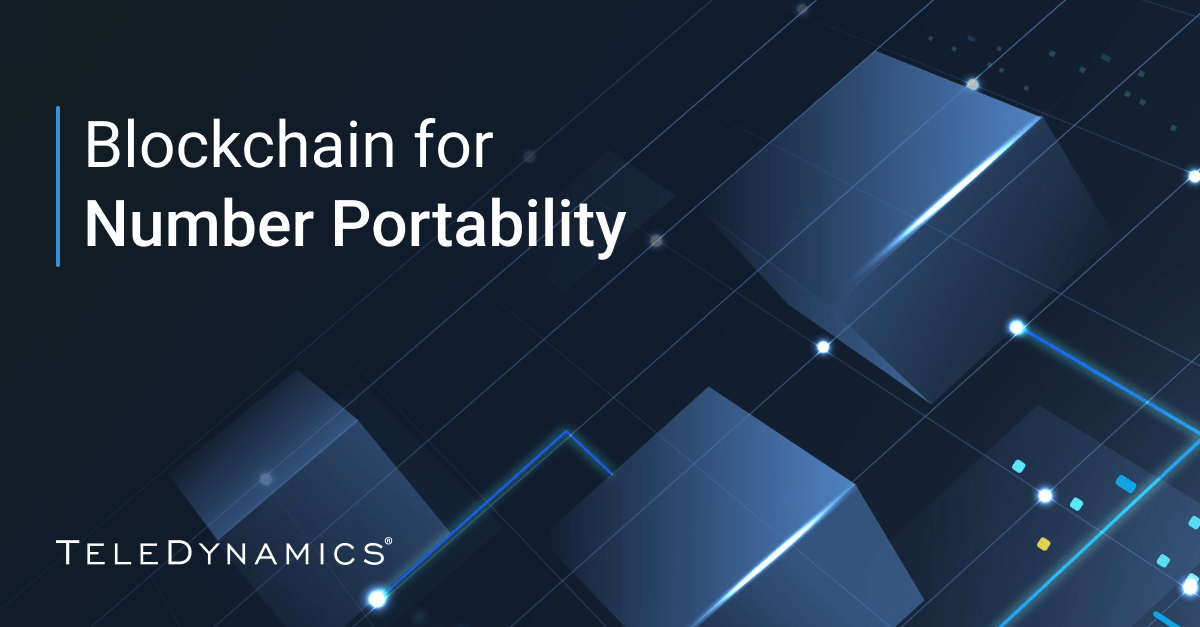
Blockchain is a technology used to store records of various types of data. The technology can be used for practically anything, including monetary transactions, music distribution, insurance and peer-to-peer energy trading. The list goes on.
One innovative application of blockchain currently under consideration is using the technology for managing and implementing telephone number portability between telephony service providers. This would save many ICT (information and communications technology) managers a lot of headaches.
In this article, we illustrate how this idea would work, and we also touch upon the implications that it would have for ITSPs (internet telephony service providers) and enterprise telephony users.
Blockchain basics
We’ve examined this technology in detail in a previous article, so we’ll only give a summary of what blockchain is and its characteristics. Blockchain is essentially a digital ledger consisting of records called blocks.
Each block is linked to the previous block in the ledger using a hash. This linking creates a chain of blocks that cannot be retroactively modified without modifying all subsequent blocks. This allows blockchain users to have confidence in the validity and infallibility of the recorded data.
Advantages of blockchain
Let’s illustrate the utility of this technology by showcasing some of the benefits of blockchain’s inherent structures. Some of the main benefits include:
- System-based management: Each blockchain database is autonomously managed. No authority is needed to ensure its validity and maintain its integrity. It is self-authenticated and self-managed.
- Decentralized, distributed public records: Blockchain blocks are recorded and distributed across many publicly accessible computers. Blockchain nodes exist in various places on the internet, so there is no single physical location where all data is stored. This makes blockchain resistant to attack, and its data can easily be verified and audited independently and inexpensively.
- Openness: The public nature of blockchain allows anyone who wants access to observe and analyze the chain data without authentication. This is useful for applications where shared resources of all types are exchanged, such as cryptocurrencies and, as we shall see, telephone numbers!
Current problems with number portability
If you changed internet telephony service providers (ITSPs) and tried to get your old numbers ported to your new provider, you may have encountered some problems. Many enterprises have reported delays in porting, mistakes and even flat-out denials of porting on time by the old ITSP. Although some of the more severe cases are rare, the problems are real and are often time-consuming and disruptive to address.
Some laws require your old ITSP to relinquish control of your numbers to their competitors when you request it; however, this is often done begrudgingly, with somewhat intentional delays. Users can encounter various other difficulties as part of the process as well.
What if your new ITSP was able to port your numbers automatically and securely at the exact time you transferred service, without any actions by your old provider? Such an arrangement would eliminate the participation of your old ITSP, ensuring prompt porting and resulting in near-zero downtime.
How blockchain can simplify number portability
Blockchain is an ideal construct for recording and verifying the ownership of a phone number by a particular business, enterprise or individual. This ownership information exists within the blockchain database and is accessible by all relevant parties, e.g., telephony providers.
Once a customer chooses a new ITSP, the provider can access the blockchain and add a new record. This record would state that this number has been ported and delivered to the customer by the new ITSP. This information is visible, verifiable and can be authenticated by all ITSPs.
There may be additional steps to ensure the customer authorized the new ITSP to make such changes, but those are outside the scope of the blockchain process.
Blockchains allow title rights to be maintained. When correctly set up to detail any exchange agreement, such as porting a telephone number, it provides a record that compels offer and acceptance, which are the general requirements of any such transaction. Essentially, this process eliminates many steps and “human factors” that can produce delays and problems, ensuring smoother transitions from one provider to another.
Conclusion
While there are no scheduled plans to use blockchain for number portability, several early studies have found it beneficial. Blockchain applications are steadily rising, and the technology’s potential is still yet to be fully realized, even in concept, let alone in practice. Only the future will tell when and how this technology will flourish.
You may also like:
Exciting telecommunications trends
How to choose a reputable VoIP service provider
Uses for blockchain in telecom









Comments